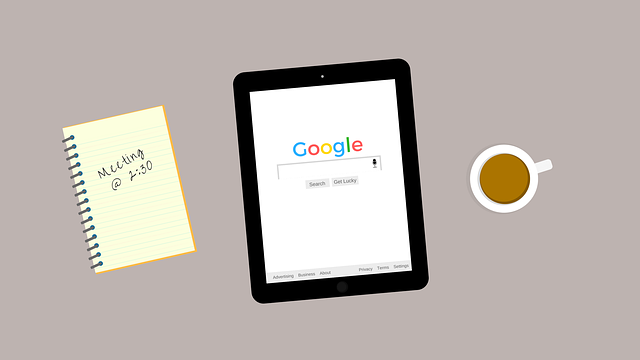Are your transactional emails falling flat? Don’t let your important communication go unnoticed. Just like a well-tailored suit or a perfectly brewed cup of coffee, your transactional emails should be designed with precision and care. They are the unsung heroes of your customer journey, delivering vital information and building trust along the way.
In this article, we will present you with 8 essential tips to revolutionize your transactional emails. From understanding their purpose to optimizing for mobile devices, we’ve got you covered. With a simple and clean design, clear and compelling call-to-actions, and personalized content, you can create emails that captivate your audience and drive action.
So, get ready to take your transactional emails to the next level and leave a lasting impression on your customers. Let’s dive in and unlock the secrets of effective email design.
Key Takeaways
- Understand the purpose of the email and tailor the design accordingly
- Keep the design simple, clean, and minimalist
- Use clear and compelling call-to-actions to guide users towards desired actions
- Personalize the email content to enhance user experience and increase engagement.
Understand the Purpose of the Email
You need to understand the purpose of the email before you begin designing it. The email tone and target audience play a crucial role in determining the design elements and content.
Consider whether the email is meant to provide information, confirm a transaction, or prompt a specific action. Understanding the purpose will help you tailor the design to effectively communicate your message.
For example, if the email is a confirmation of a purchase, the tone should be reassuring and the design should include clear order details. On the other hand, if the email is a promotional offer, the tone can be more persuasive and the design can incorporate eye-catching visuals.
By understanding the purpose of the email, you can create a design that resonates with your target audience.
Now, let’s move on to keeping the design simple and clean.
Keep the Design Simple and Clean
Simplicity is key when it comes to crafting transactional emails; less is more. Design principles dictate that a minimalist approach is the best way to go. Avoid cluttering your email with unnecessary elements that could distract or confuse your recipients.
Instead, focus on a clean and streamlined design that highlights the most important information. Use whitespace strategically to create a sense of balance and ease of reading. Consider using a single column layout to guide the reader’s eye smoothly from top to bottom.
By keeping your design simple and clean, you ensure that your message is clear and easy to understand.
Now, let’s move on to the next section about using clear and compelling call-to-actions.
Use Clear and Compelling Call-to-Actions
To effectively engage your recipients, it’s crucial to incorporate clear and compelling call-to-actions into your email design. These call-to-actions serve as guideposts, directing your users towards the desired action, whether it’s making a purchase, signing up for a newsletter, or downloading a resource.
To improve user engagement and increase click-through rates, it’s important to make your call-to-actions stand out. Use contrasting colors, bold fonts, or buttons to draw attention to them. Keep the text concise and action-oriented, such as ‘Shop Now’ or ‘Download Here.’ Additionally, consider using scarcity or urgency to create a sense of FOMO (fear of missing out).
By incorporating clear and compelling call-to-actions into your transactional emails, you’ll encourage your recipients to take the desired action and move them further along the customer journey.
Now, let’s dive into how you can personalize the email content to enhance the user experience.
Personalize the Email Content
Make your email content more engaging and meaningful by personalizing it to cater to the unique preferences and needs of each individual recipient. Email personalization involves using dynamic content to tailor the email to specific recipients based on their demographics, behaviors, or past interactions. This not only increases the chances of recipients opening and engaging with the email, but also enhances their overall experience.
To effectively personalize your transactional emails, consider incorporating the following elements:
| Category | Examples | Benefits |
|---|---|---|
| Name | Hi [Name], | Creates a personalized touch, making the recipient feel valued. |
| Purchase history | Based on your recent purchase of [Product], | Recommends related products or offers that align with the recipient’s interests. |
| Location | In your area, | Provides relevant information about local events or promotions. |
| Behavior | We noticed you abandoned your cart, | Encourages the recipient to complete their purchase by offering incentives or reminders. |
| Loyalty program | As a valued member of our loyalty program, | Recognizes and rewards loyal customers, fostering a sense of exclusivity. |
By personalizing your email content, you can create a more personalized and tailored experience for your recipients, increasing their engagement and likelihood of taking action. Now, let’s explore how to optimize your transactional emails for mobile devices.
Optimize for Mobile Devices
With the rise of smartphones, ensuring that your emails are mobile-friendly is like having a golden ticket to reach a wider audience and tap into the potential of mobile marketing.
Mobile design is crucial in today’s digital landscape, where people are constantly on their phones. By optimizing your transactional emails for mobile devices, you can provide a seamless experience for your users, increasing engagement and conversion rates.
A responsive layout is key to making your emails look great on any screen size, whether it’s a smartphone or a tablet. Make sure your text is easily readable, buttons are large enough to be tapped with a finger, and images are optimized for fast loading.
By prioritizing mobile design, you can ensure that your transactional emails are effective and deliver a great user experience.
Now, let’s move on to the next section and explore how you can test and analyze the performance of your emails.
Test and Analyze Performance
Get ready to unlock valuable insights about your email campaigns by testing and analyzing their performance. Data analysis and A/B testing are essential tools that can help you optimize your transactional emails for better results. By conducting A/B tests, you can compare different elements of your email, such as subject lines, call-to-action buttons, or email templates, to see which ones perform better. This allows you to make data-driven decisions and improve the effectiveness of your emails. Additionally, analyzing the performance of your transactional emails can provide you with valuable information about open rates, click-through rates, and conversion rates. By monitoring these metrics, you can identify areas for improvement and make necessary adjustments to optimize your email campaigns. Utilize the table below to keep track of your data analysis and A/B testing results:
| Test Element | Variation A Result | Variation B Result | Winner |
|---|---|---|---|
| Subject Line | 25% Open Rate | 30% Open Rate | B |
| Call-to-Action | 10% Click Rate | 15% Click Rate | B |
| Email Template | 20% Conversion | 18% Conversion | A |
| Personalization | 12% Conversion | 14% Conversion | B |
| Timing of Emails | 5% Conversion | 7% Conversion | B |
By consistently testing and analyzing the performance of your transactional emails, you can continuously improve their effectiveness and maximize your email marketing efforts.
Frequently Asked Questions
How can I ensure that my transactional emails are not marked as spam by recipients?
To ensure your transactional emails aren’t marked as spam, there are several strategies you can use. First, verify your domain and set up SPF and DKIM authentication. This helps establish your email’s legitimacy and improves deliverability.
Next, personalize your content by addressing recipients by name and tailoring the email based on their actions or preferences. This creates a more engaging and relevant experience for the recipient.
Craft concise and engaging subject lines that avoid spam triggers. Avoid using excessive promotional language, as this can increase the likelihood of your email being flagged as spam.
It’s also important to use a reputable email service provider, as they often have built-in deliverability features and can help ensure your emails reach the inbox.
Lastly, regularly monitor your email deliverability metrics to identify and resolve any issues promptly. This allows you to stay on top of any potential problems and maintain a high deliverability rate.
Are there any legal requirements or regulations I need to follow when sending transactional emails?
To ensure compliance and maximize email deliverability, it’s crucial to follow legal requirements and regulations when sending transactional emails. Engage your recipients with engaging content and interactive elements, but be cautious with image usage to avoid triggering spam filters.
Additionally, implement performance tracking and measurement tools to analyze the effectiveness of your emails. By adhering to these guidelines, you can create impactful transactional emails that keep your audience informed and satisfied.
How can I make transactional emails more engaging and interactive for recipients?
To make your transactional emails more engaging and interactive, consider incorporating interactive features and personalization techniques.
Interactive features such as clickable buttons or surveys can encourage recipients to take action and provide valuable feedback.
Personalization techniques, like addressing recipients by their names and tailoring content based on their preferences, make the emails feel more personalized and relevant.
By utilizing these strategies, you can create transactional emails that not only deliver important information but also captivate and engage your recipients.
Are there any best practices for including images or graphics in transactional emails?
When designing transactional emails without images, it’s crucial to prioritize personalization. By tailoring the content to the recipient’s specific needs or preferences, you create a more engaging experience.
Personalization can be achieved through dynamic content, such as recipient names or order details. This not only increases the relevance of the email but also enhances the overall user experience.
By focusing on personalization, you can ensure that your transactional emails are effective and leave a lasting impression on your recipients.
How can I effectively track and measure the performance of my transactional emails?
To effectively track and measure the performance of your transactional emails, you need to utilize various tracking methods and performance metrics.
By implementing tools like email analytics software, you can gain valuable insights into open rates, click-through rates, and conversion rates. These metrics provide a clear picture of how well your emails are performing and help you identify areas for improvement.
With this data, you can optimize your transactional emails to enhance engagement and drive better results.
Conclusion
In conclusion, designing effective transactional emails is crucial for engaging and converting customers. By understanding the purpose of the email, keeping the design simple and clean, and using clear and compelling call-to-actions, you can ensure that your emails make a lasting impact.
Additionally, personalizing the content and optimizing for mobile devices are important factors to consider. These elements help to create a more tailored and user-friendly experience for your recipients.
Don’t forget to test and analyze the performance of your emails. This will allow you to constantly improve your strategy and make necessary adjustments.
Remember, in the world of email marketing, it’s all about making a lasting impression and achieving ROE (Return on Engagement)!







